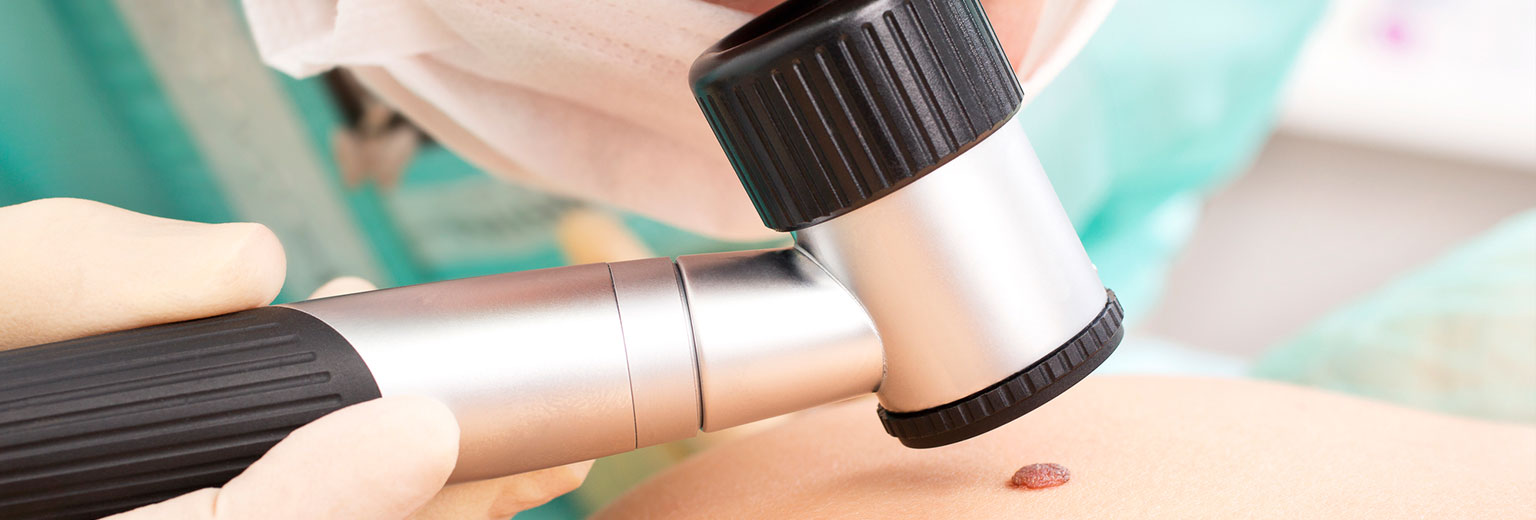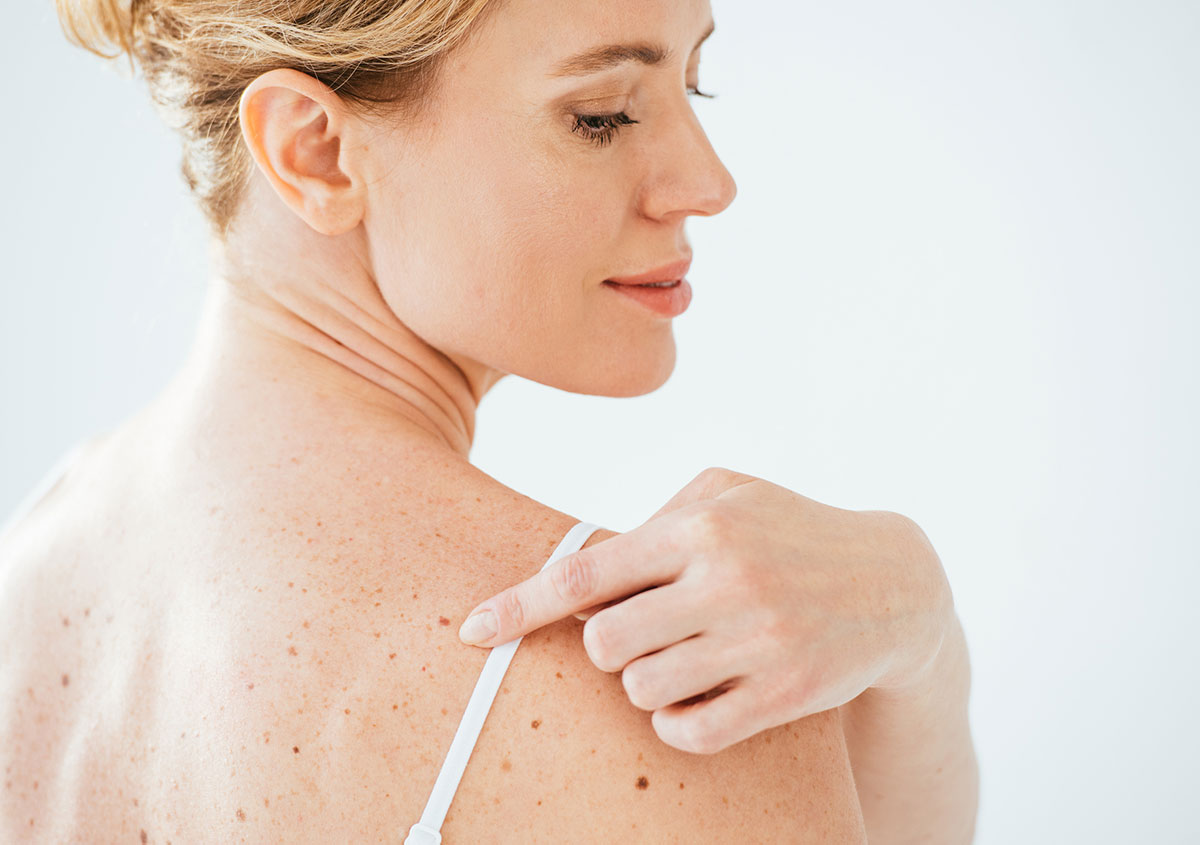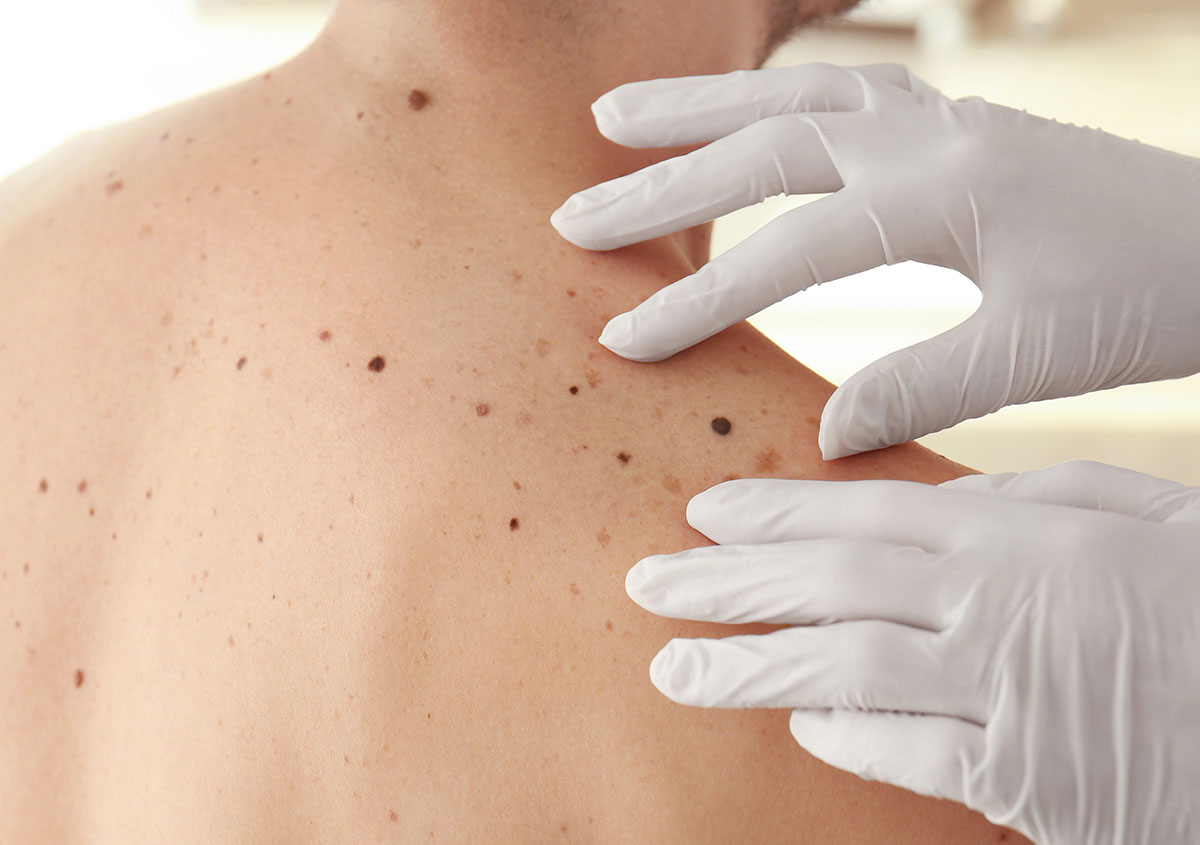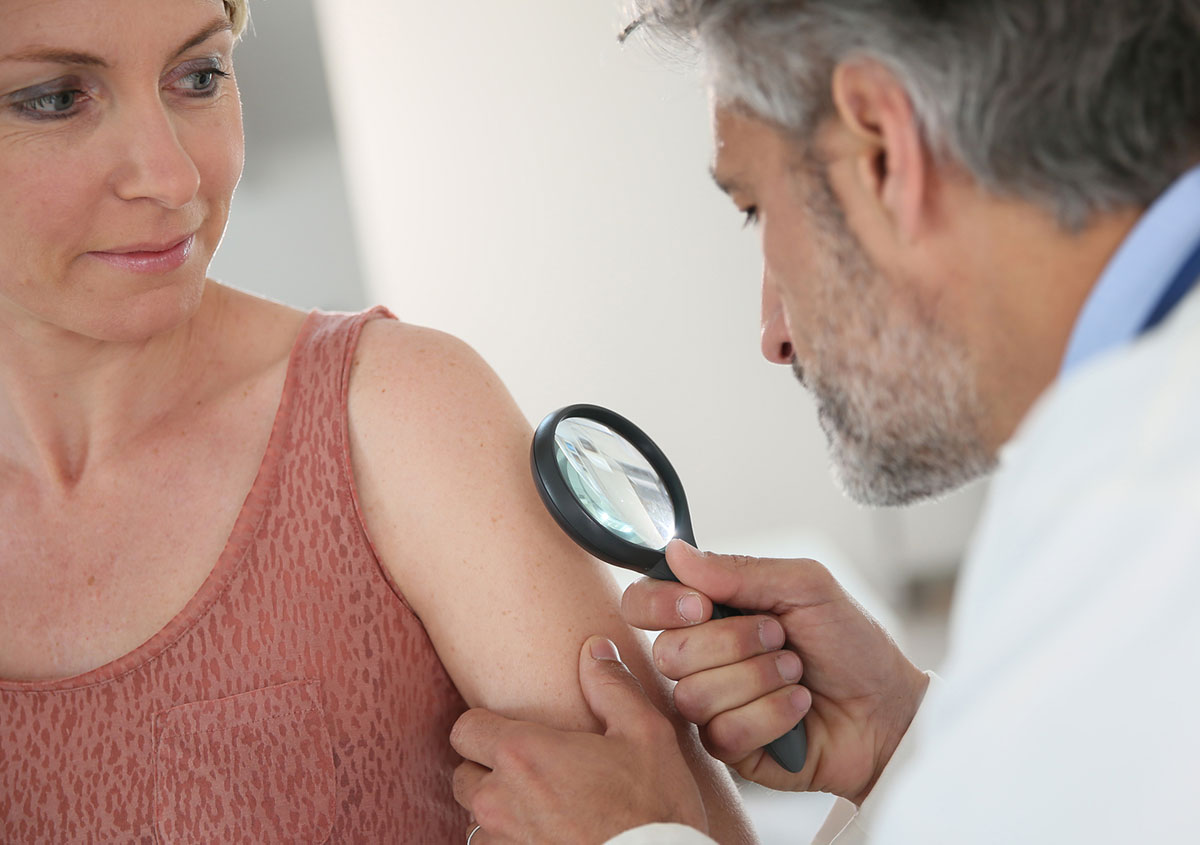Skin cancer is the most common type of cancer worldwide, but 99% of cases are curable if they are diagnosed and treated early. At Kirsch Dermatology, we offer comprehensive skin examinations to identify suspicious skin growths that may require treatment.
Actinic Keratoses (AKs)
AKs are precancerous skin lesions. Because any AK can develop into skin cancer, it is important to get AKs examined and treated early. AKs range in size from a pinpoint to centimeters across. Most AKs look like patches of skin that are rough and scaly, but they may also appear as bumps or horns that are smooth or wrinkled. AKs can vary in color from yellow or brown to red, pink, or violet, and they may also appear with mottled coloring. They are most often found on sun-exposed areas such as the face, head, ears, neck, forearms, and hands.
Your risk of developing AKs is greater if you:
- Are over age 40
- Have fair skin, fair hair, and light eyes
- Have a history of sun exposure, tanning, or sunburns
- Live in a sunny climate or spend a lot of time in the sun
- Have a personal history of skin cancer or AKs
- Have a weakened immune system
Basal Cell Carcinoma (BCC)
BCC is the most common type of skin cancer and can look like an open sore, pink/red growth, scar, shiny bumps, or a growth with rolled or elevated edges and a central indentation. They may also itch, crust, bleed, or ooze. Most BCCs form in sun-exposed areas of the body like the face, head, ears, neck, hands, and forearms. BCCs grow slowly and are usually curable, but without early detection they can be dangerous, disfiguring, and even fatal.
Your risk of developing BCCs is greater if you:
- Are over age 50
- Are male
- Have fair skin
- Have a history of sun tanning or indoor tanning
- Have a personal history of skin cancer of any kind, including AKs
- Have chronic infections or skin inflammation
Squamous Cell Carcinoma (SCC)
SCC is the second most common type of skin cancer and can look like an open sore, scaly red patch, rough or thick wart-like skin, or raised growth with a central indentation. They may also itch, bleed, or crust. Most SCCs form in sun-exposed areas, but they can be found anywhere on the body. Without early detection, SCCs can be dangerous, disfiguring, or fatal.
Your risk of developing SCCs is greater if you:
- Are over age 50
- Are male
- Have fair skin
- Have a history of sun tanning or indoor tanning
- Have a personal history of skin cancer of any kind, including AKs
- Have chronic infections or skin inflammation
- Have a history of human papilloma virus (HPV)
- Have sun-sensitive conditions, including xeroderma pigmentosum
- Have a weakened immune system due to a medical condition or medications
Melanoma
Melanoma is a rarer and more serious type of skin cancer. Melanomas can be raised or flat and appear in a wide range of colors. Contrary to popular belief, only 20 to 30 percent of melanomas arise from moles while the majority appear on normal-looking skin. Early detection is critical due to melanoma’s dangerous ability to spread rapidly to other organs of the body.
Your risk of developing melanoma is greater if you:
- Have fair skin
- Have many moles, especially moles larger than the tip of a pencil eraser
- Have a history of sun tanning or indoor tanning
- Have a personal history of skin cancer of any kind
- Have a weakened immune system due to a medical condition or medications
- Have a family history of melanoma (1 in 10 patients)
Screenings
We recommend everyone to receive a comprehensive skin examination at least once per year. Those at higher risk or with a history of skin cancer may need more frequent evaluations. For our professional skin examinations, Dr. Kirsch uses a handheld microscope known as a dermatoscope, which provides a more accurate assessment than the human eye alone. If any suspicious lesions are discovered during your screening, Dr. Kirsch will recommend an appropriate treatment plan.
Treatments
Kirsch Dermatology offers a range of treatments for cancerous and precancerous lesions. Your treatment will likely begin with a biopsy, where a small sample of skin is removed and carefully examined under a microscope by a dermatopathologist. The biopsy evaluation will help determine the precise diagnosis and best treatment. Your treatment options will include:
- Cryosurgery: The tissue may be frozen using liquid nitrogen, which destroys the lesion and causes it to fall off within 2 to 4 weeks. This treatment is often recommended for AKs.
- Electrodessication and Curettage: A basic skin procedure in which the technique of curettage, scraping away the cancerous tissue using a sharp curette, is followed by electrodessication (heating) with an electric needle.
- Surgical Excision: Excision simply means “to cut out.” Surgical excision can be used to treat melanoma and non-melanoma skin cancer. The tumor is cut out together with some of the healthy skin around it. The healthy skin is called a margin. The reason for taking a margin is to remove any cancer cells that have spread into the surrounding tissue. After a tumor is excised, a board-certified dermatopathologist will study the tissue that was removed. This is done to be certain that all the cancer cells are gone.
- Surgical Excision with Intraoperative Frozen Sections: Similar to Mohs surgery, layers of skin growths may be surgically removed little by little until no abnormal cells are left. A board-certified dermatopathologist examines the removed skin between stages to ensure the malignant tissue is fully removed. This treatment is usually recommended for cancerous skin growths on the face and scalp.
Treatment for skin cancer is usually successful but does not prevent new cancerous lesions from forming in the future. In fact, having a history of skin cancer makes you significantly more likely to develop new cancerous growths in the future. If you have received any treatment for skin cancer in the past, we strongly recommend you receive a comprehensive skin exam at least once every 6 to 12 months.
Skin Cancer Prevention Tips
Here are some of the best tips to care for your skin and reduce your risk of developing skin cancer:
- Come in for a professional skin examination at least annually
- Examine your own skin at home monthly
- Tell your dermatologist about any new, changing, or suspicious skin lesions anywhere on your body
- Wear sunscreen daily (at least SPF 30 or higher)
- Minimize sun exposure
- Avoid sunburns, sun tanning, and indoor tanning
- Wear sun protective clothing, including UV-blocking sunglasses and wide-brimmed hats
- Apply a protective window film to the windows of your home and vehicle
- Eat a healthy diet
*Statistics and risk factors taken from skincancer.org.




